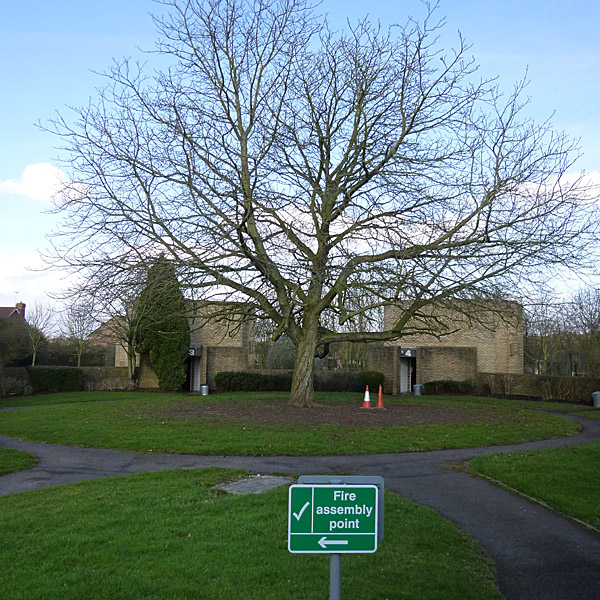| Architect |
William Howell of Howell. Killick, Partridge and Amis |
| Date Built |
1968 - 70 |
| Location |
Gibbet Hill Road, University of Warwick
Campus |
| Description |
|
|
This rather quirky collection of building
on the campus of the University of Warwick
was designed by William Howell from the
architectural practice of Howell. Killick,
Partridge and Amis. They sit in a
circle around a sort of village green
tucked away in a corner of the Gibbet Hill
area of the campus. Quirky they may
be but the quality of the design was
recognized in 1970 by a RIBA Award and in
more recent times given Grade II*
listed status. In giving
them this status English Heritage said
that they are, " ... amongst the
very best works by this renowned
architectural practice who were
responsible for some of the best
university buildings in the 1960s and
70s." The university says that the original intention of these little houses was to provide accommodation to, " ... visiting mathematicians and their families attending symposia, workshops, etc. at the Mathematics Institute. Since then, they have been in regular use, even accommodating a former Vice-Chancellor, Clark Brundin, who lived there for a period of time." The complex comprises five houses and two flats built of yellow-faced Stourbridge bricks and featuring flat roofs. The houses are two-storeys high and have single-storey extensions at the front and back. The front extension acts as a porch, store and laundry room with a study to the rear. The block of flats is also of two-storeys but it doesn't have the study attachment. The Math Houses were the brainchild of Professor Christopher Zeeman who explained his idea in an article he wrote entitled, "Early History of the Warwick Mathematics Institute". "When the architect, Bill Howell, had been appointed I went to see him before he had started thinking. 'Each house must have a study' I said 'away from the main part of the house so that the mathematician can work undisturbed, and there must be blackboards round the walls.' 'How do you write in the corners where two walls meet?' he asked 'I suppose you could round the corners by building the blackboards out' I suggested. 'Better still' he replied 'I could build the walls in.' 'Fine - and put the blackboards low enough for small children to use the bottom bit'. |
|
|
Houses
for Visiting Mathematicians, University
of Warwick , UK
      Close Window  |